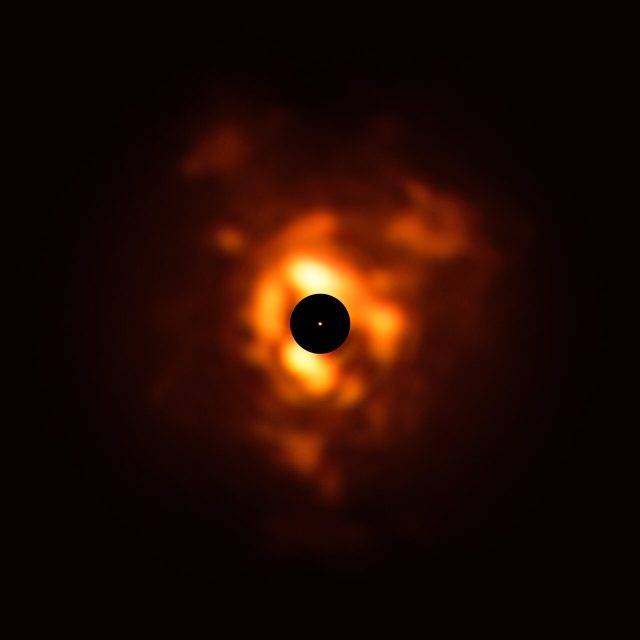Because Betelgeuse is so large and so close, it’s actually possible to resolve some details of its surface rather than simply seeing it as a point source of light. Some astronomers have used the Very Large Telescope at the European Southern Observatory to do just that, and they’ve found something extremely weird: Betelgeuse’s dimming isn’t even.
As you can see in the before-and-after images above, Betelgeuse was more or less spherical about a year ago . By December, it was most decidedly not. While the upper hemisphere of the star looked much as it had a year earlier, the lower portion looked diffuse and distorted, with at least two regions of distinct brightnesses.
What in the world could be going on here? Betelgeuse has always been a variable star (though far less variable than at present), and there are a couple of potential causes. Both are related to the star’s enormous size, which means that its surface layers are only distantly and indirectly related to the fusion reactions that are taking place in its core.
That means the star has only a tenuous gravitational grip on some of its outer layers, which have a lot of heavier elements in them due to Betelgeuse’s advanced age. The net result of this is the production of dust — lots of dust. Eventually, that dust will go into seeding heavier elements into newborn exosolar systems, helping produce rocky planets like Earth. But in the meantime, it’s still in the area of Betelgeuse, which the European Southern Observatory has helpfully imaged as well. It’s possible that the dimming is simply caused by a dense cloud of dust residing between us and the star.
 / Image of the dust surrounding Betelgeuse,
/ Image of the dust surrounding Betelgeuse,
Of course, there’s also the possibility that some process we’re completely unaware of is happening, which would be even more interesting.
In any case, because of its proximity and our ability to image Betelgeuse, it makes a fantastic laboratory to study whatever process is driving the dimming. But for those of you hoping for a once-in-many-lifetimes lightshow from a supernova, we’re sorry to report that neither of these likely answers is an indication that one of those is forthcoming.






GIPHY App Key not set. Please check settings